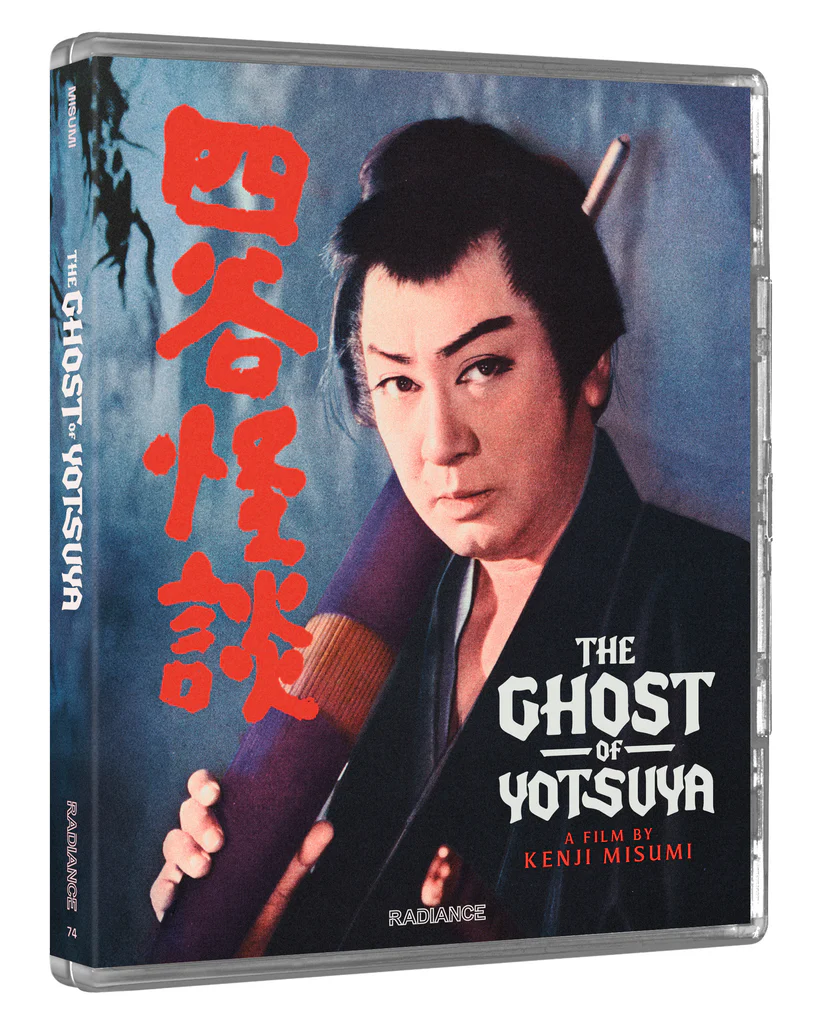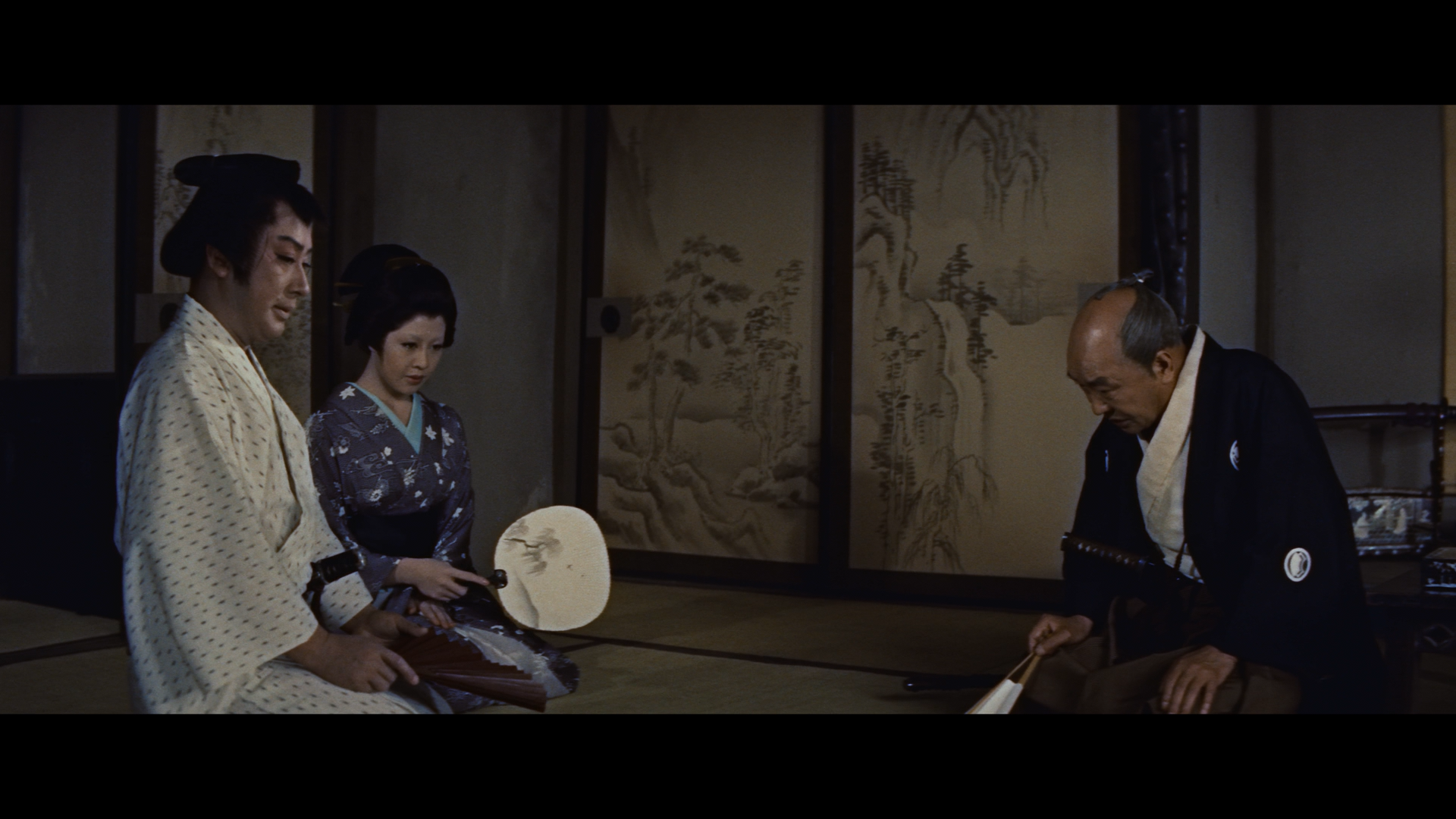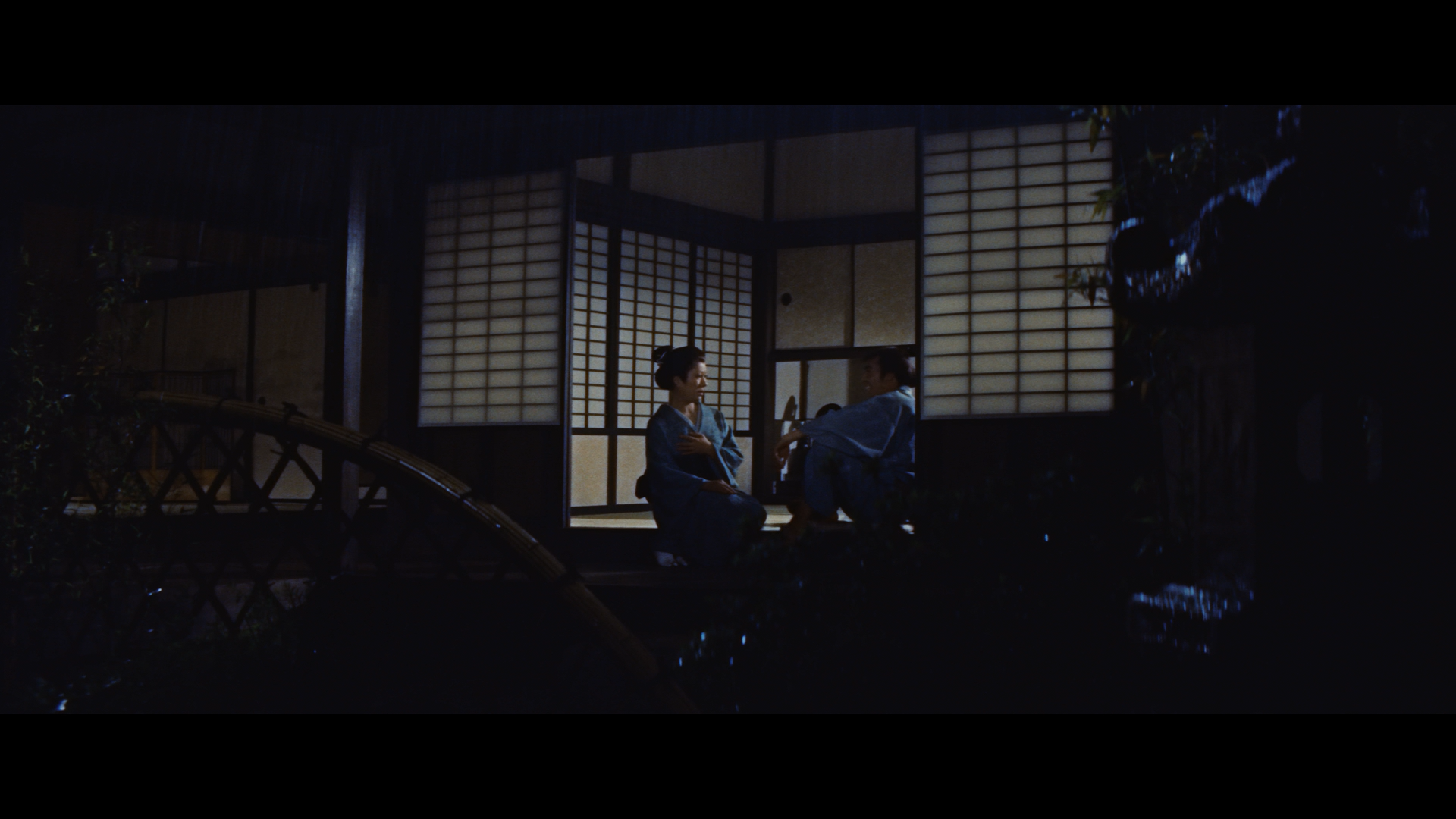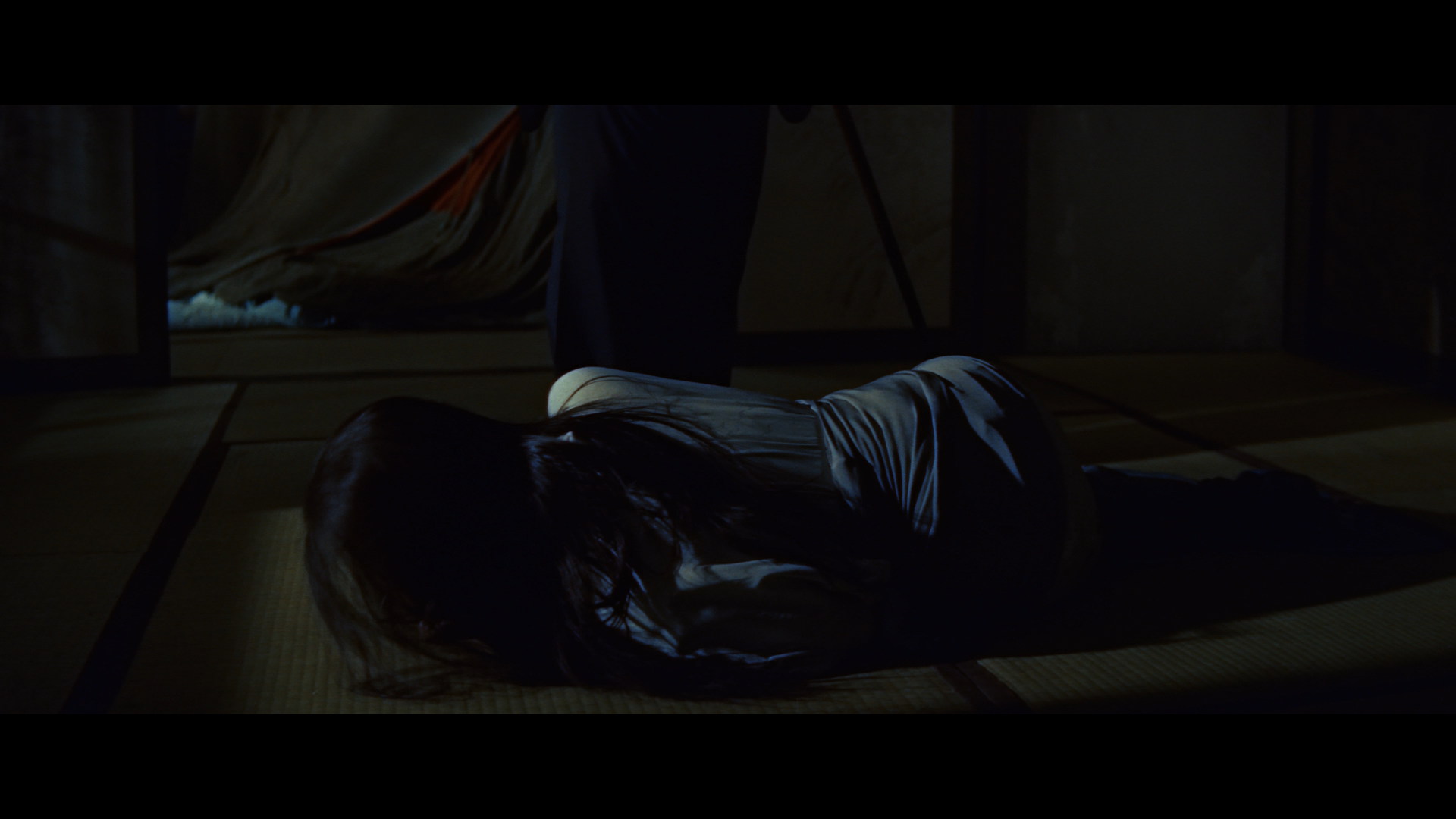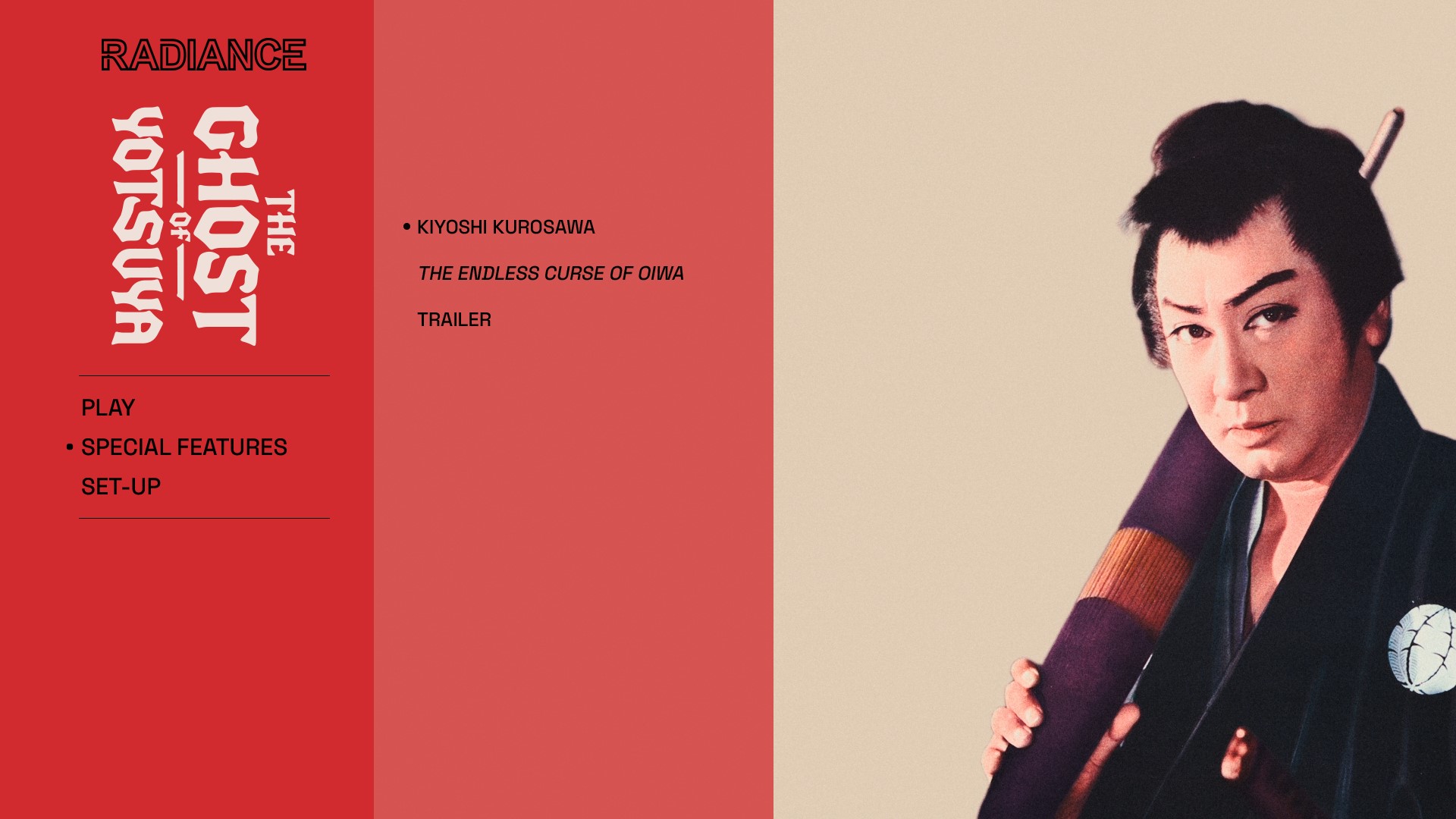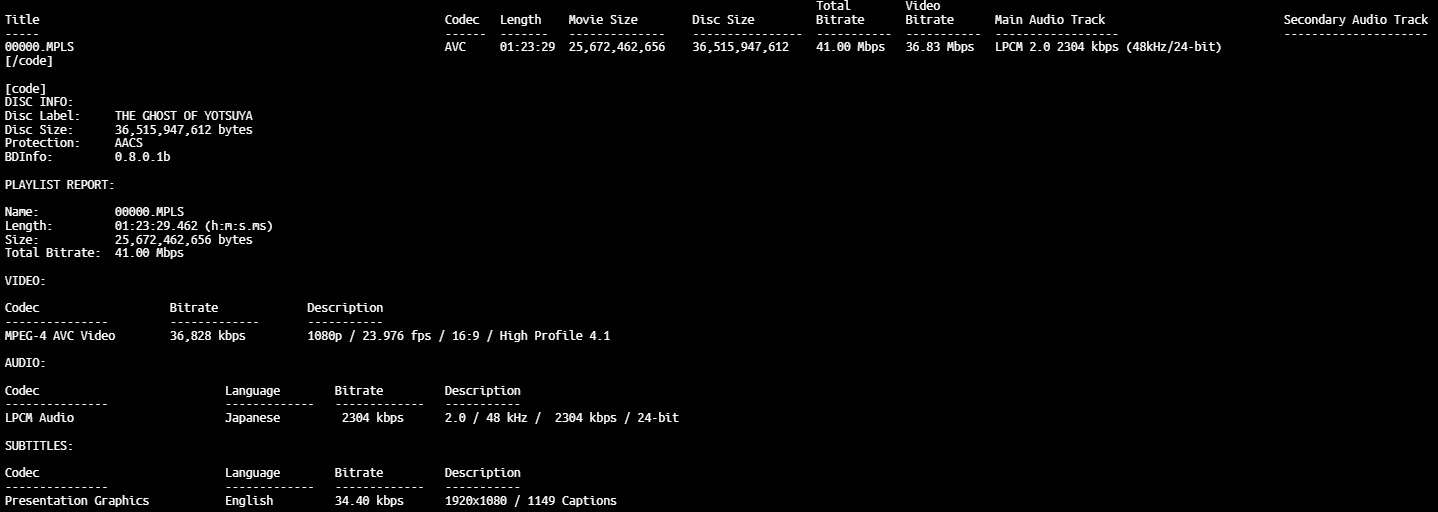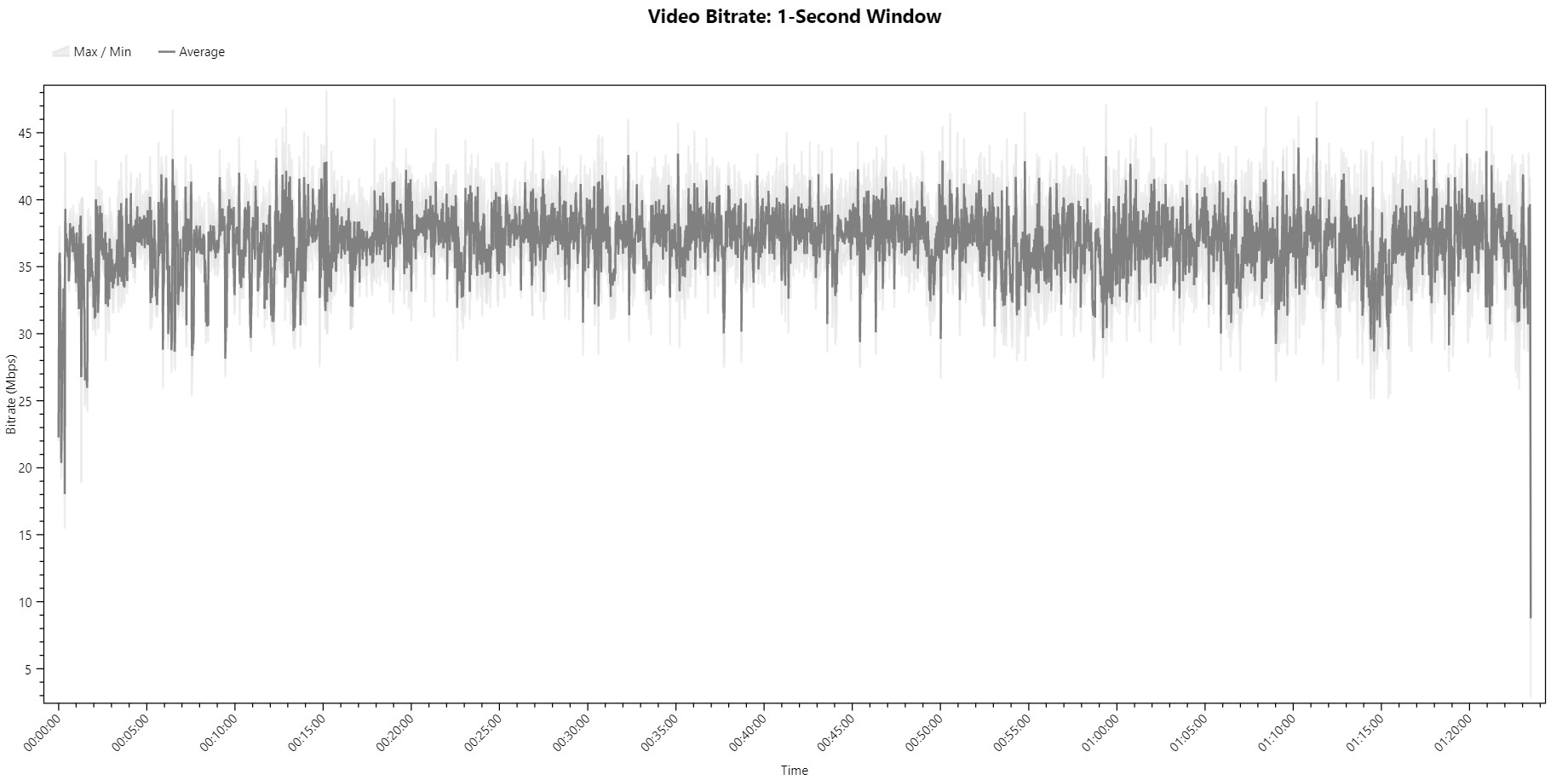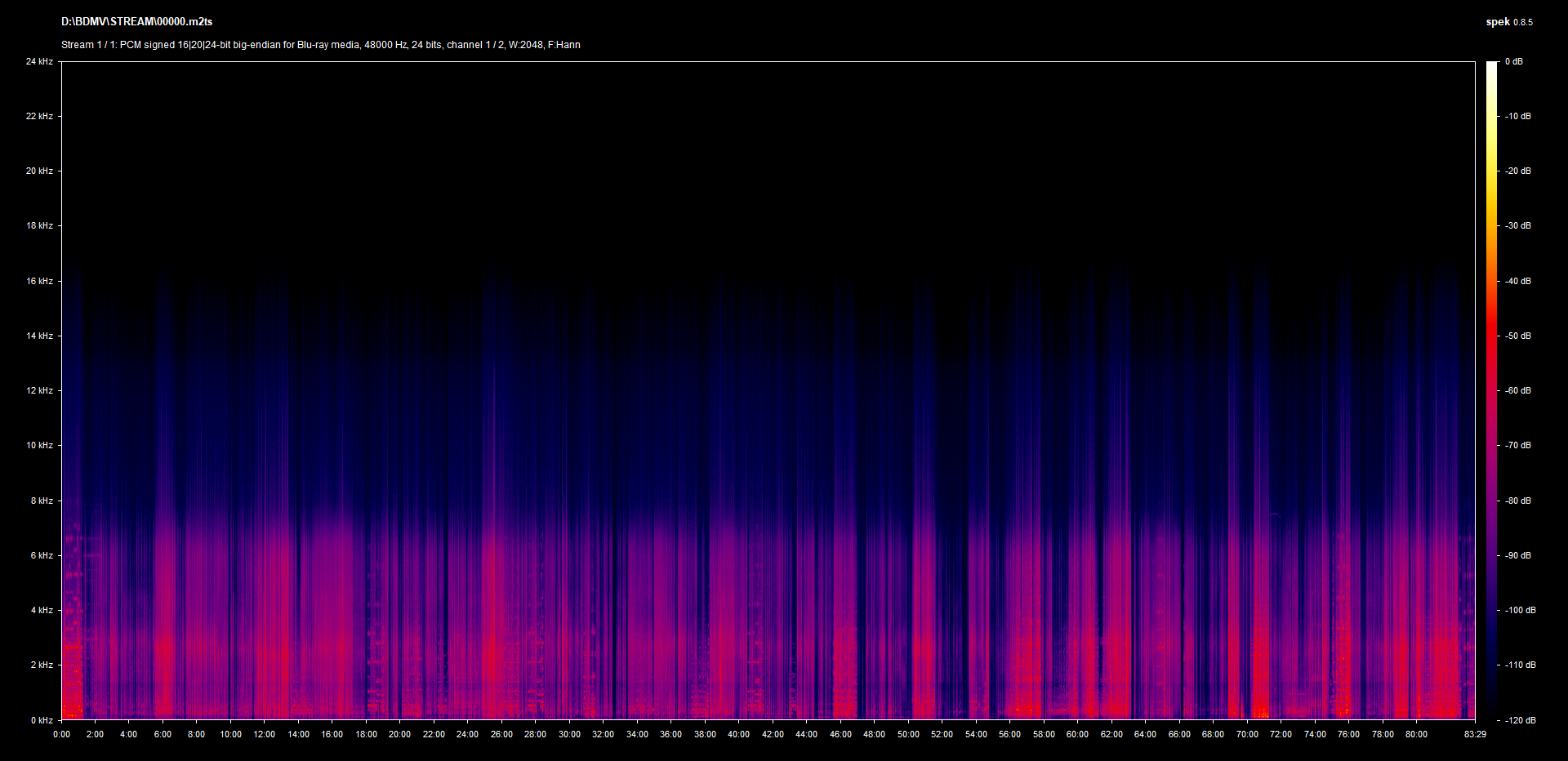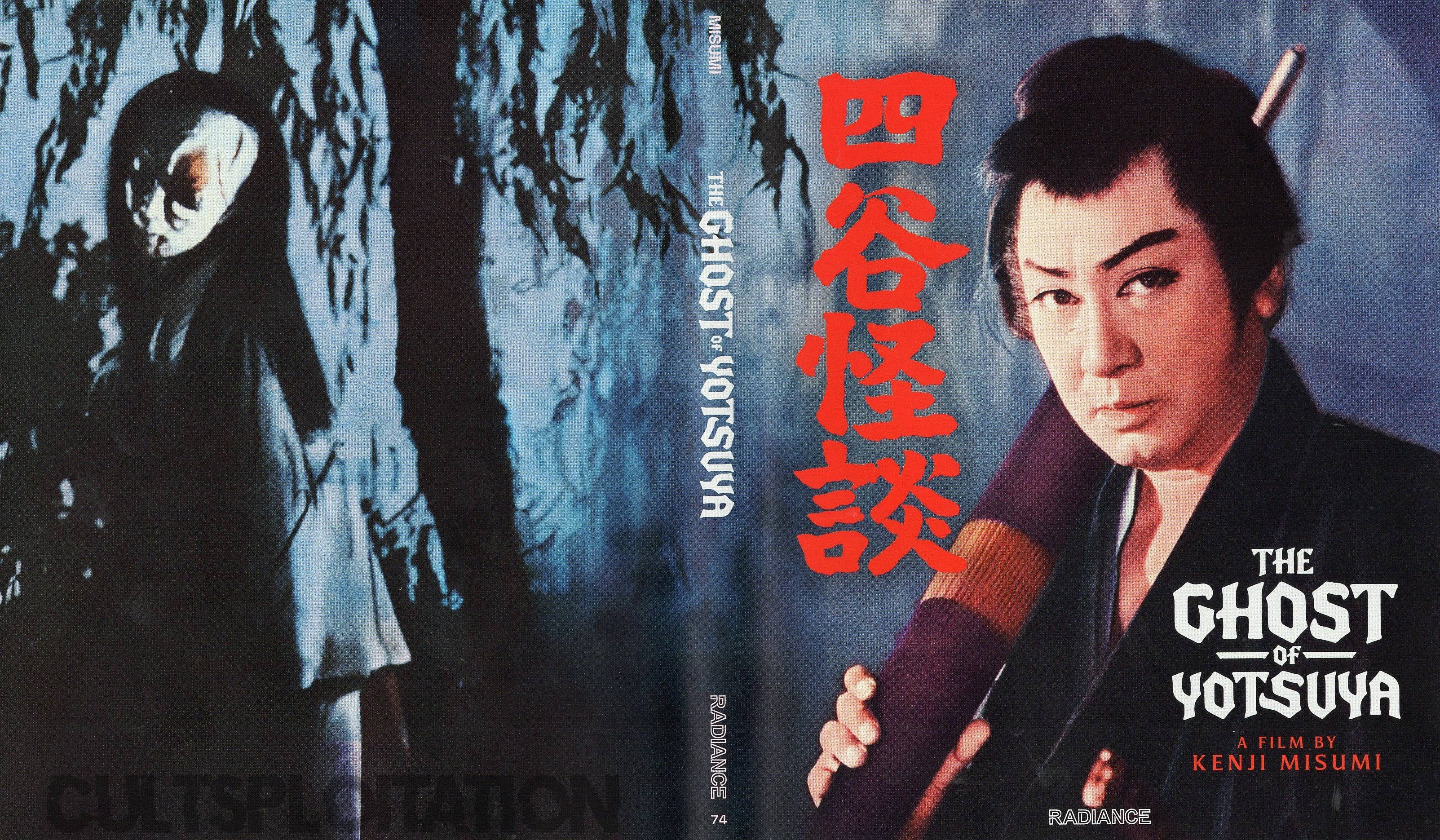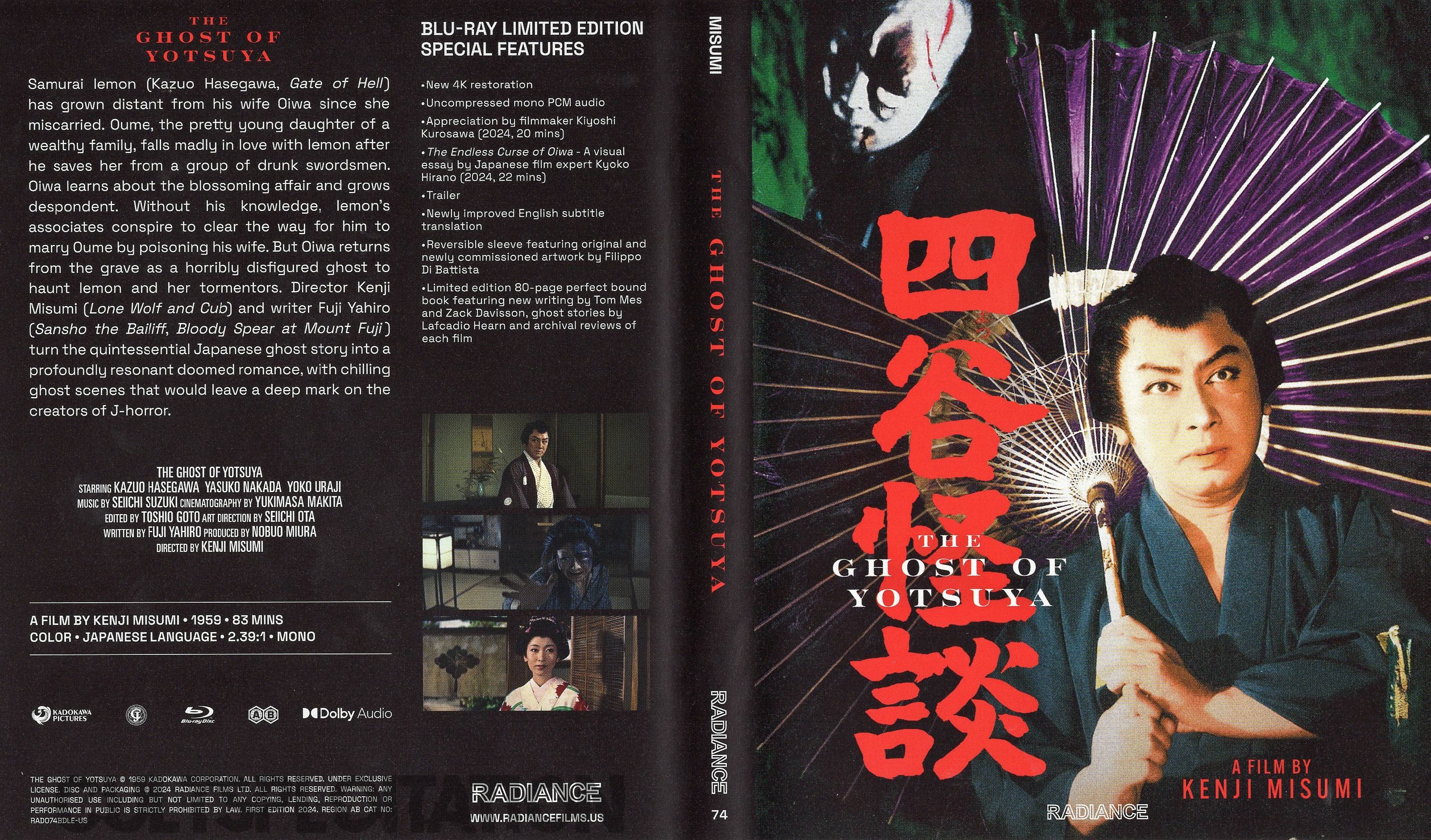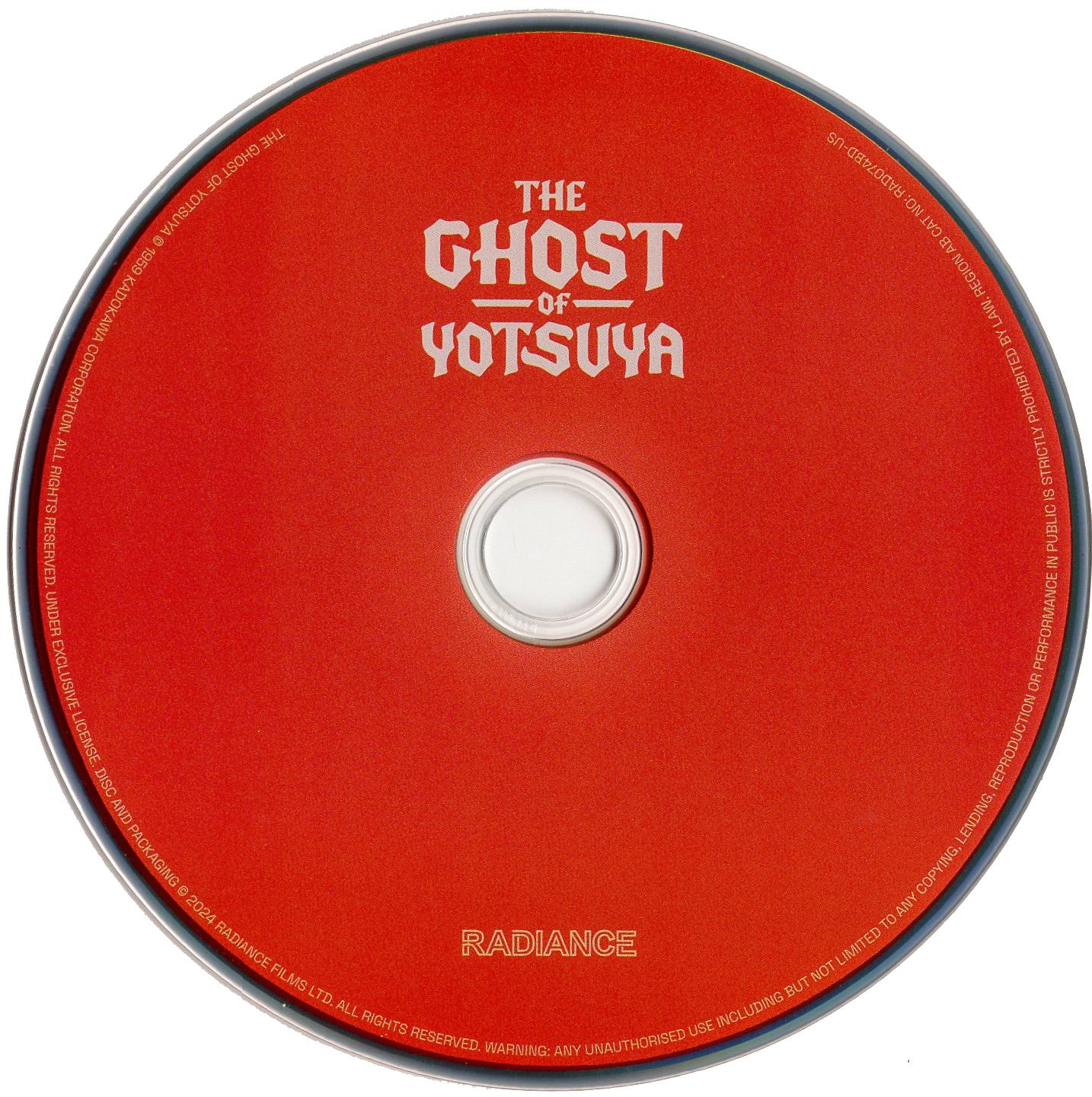
The Ghost of Yotsuya features one of Japan’s most popular and lasting ghost stories; as Zack Davisson points out in an essay about Japanese historic ghost stories in this boxset, the origins of the tale date back to an 1825 kabuki play. This resulted in a number of retellings in different forms of media, but the one we’re most concerned with is the 1959 film directed by Kenji Misumi loosely adapted from the play. The movie version stars Kazuo Hasegawa as Iemon, a jobless ronin in the Edo period who is wooed away from his marriage to Oiwa (Yasuko Nakada) by the local daimyo’s daughter Oume (Yôko Uraji) and ends up having Oiwa poisoned and murdered, only to have her reappear as a specter haunting all of the involved until their deaths.
The overall story sounds familiar, but that’s because iterations of this play have been used and recycled throughout Japan’s history. Here, The Ghost of Yotsuya manages to take some of the elements of kabuki theater and meld it into a pretty complex tapestry that explores Edo-era subjugation, responsibility, and corruption. Misumi spends a long portion of the movie simply setting up his characters; the first hour or so is devoted to exploring the dicey relationship between Iemon and Oiwa, which is even more complicated after Oiwa’s miscarriage and subsequent illness. There’s no mincing emotions to this film – Misumi makes nearly everyone unlikable, from the surly and disrespectful Iemon to the various samurai that aid and abet the coercion and murder of Oiwa. While The Ghost of Yotsuya‘s movement through these dynamics is pretty standard, there’s a lot to like about Misumi’s infusion of implied political undertones and the film’s minor feminist perspective. There’s also some great cinematography here, as the film’s approach to color often highlights the souring developments and literally becomes dark and gray after Oiwa’s murder.
For some, The Ghost of Yotsuya may be a little too slow, since its horror elements are only truly pronounced in the last twenty minutes of the film. But for those that stick with it, the film features a very rewarding and eerie experience once Oiwa returns from the dead as a disfigured ghost, with prominent makeup features for her facial complexion and effective use of floating effects as the ghost moves. Once the haunting occurs, the film ventures into surreal territory and works quite well to set up a disquieting atmosphere that truly does resemble a Japanese-style Gothic. While it’s easy to discount the feeling that all of this has been done before, it’s important to keep the film’s age in mind; released in 1959, this is the progenitor of many contemporary Japanese ghost stories, and one can directly trace the influences to Misumi’s take on this traditional tale. It’s ultimately a rewarding watch, and surprisingly visceral in its violence and grim perspective.
Blu-ray
Radiance Films has released The Ghost of Yotsuya on Blu-ray as part of the Daiei Gothic boxset. The film gets a new 4K restoration by Kadokawa Corporation, and the results look quite good. The film source seems to be in good shape considering its age, with only a couple of noticeable instances of damage including a visual line in the center of the image about halfway into the movie. Otherwise, detail is strong especially with textures, and facial features are nicely contoured. The color grading is robust but does occasionally feature some inconsistency especially with skin tones and a sort of flickering transformation. Film grain is moderate but not overtly clumpy or obstructive, and there doesn’t seem to be any visual artifacts or smeariness. A great restoration from Kadokawa and Radiance.
Audio is presented with an LPCM 2.0 mono Japanese track, which sounds fairly good except for some occasional blown-out distortion and a couple instances of muffledness. English subtitles are included and defaulted to on.
Extras include a new interview with filmmaker Kiyoshi Kurosawa on the lasting impact of the film, which runs about 20 minutes. There’s also a new visual essay on the different adaptations of “The Ghost Story of Yotusya” from Kyoko Hirano, which runs 22 minutes and dives into various media tellings of the tale. There’s an original trailer included. Since this is included in the boxset, I will also mention that the overall package includes an essay booklet featuring new writing from Tom Mes on the Japanese Gothic and Daiei studio’s formation and subsequent release of horror and Rashomon; the aforementioned essay on Japanses ghost stories and their various forms by Davisson; classic reviews of all three of the films; and two reprinted Japanese ghost stories written by Lafcadio Hearn. This film’s case also features a reversible sleeve featuring new artwork from Filippo Di Battista.
Extra Features
- NEW 4K restoration by Kadokawa Corporation
- NEW interview with filmmaker Kiyoshi Kurosawa (1080p; 19:33)
- NEW A visual essay on the history and adaptations of the classic Ghost of Yotsuya story by author Kyoko Hirano (1080p; 22:08)
- Trailer (1080p; 1:43)
- NEW Reversible sleeve featuring original and commissioned artwork by Filippo Di Battista
Verdict
The Ghost of Yotsuya is an important feature in Japanese cinema history and this Radiance Films boxset collects it with a very nice transfer for home video that suffers from some color timing issues but ultimately should meet expectations from this solid boutique label. Illuminating extras and excellent essays add context to the feature film.

